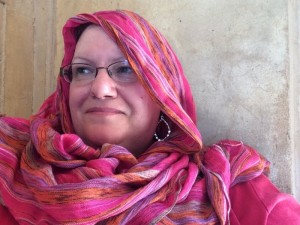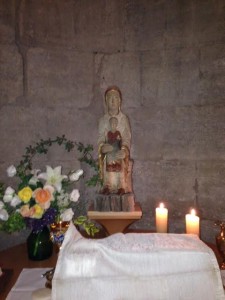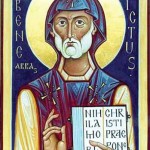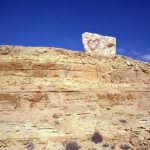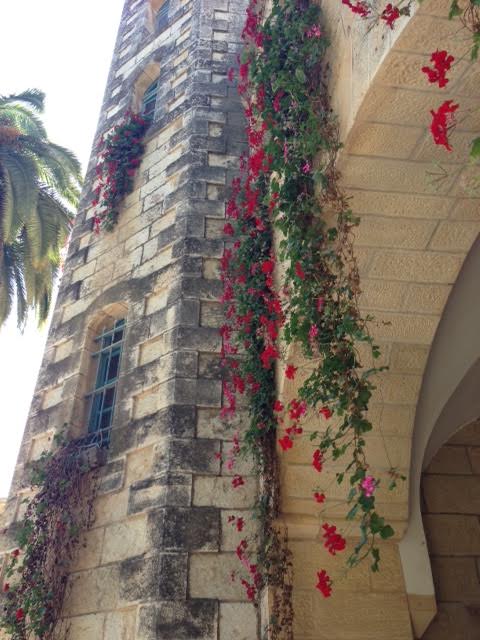
Thanks to an oxygen-depriving case of pneumonia that cut the trip short, too many of my memories of Israel reside in a nebulous haze that has prevented me from writing about my experiences there. On this great feastday of Saint Benedict of Nursia, however, my Oblate’s heart cannot help but share with you the experiences of Benedictine hospitality with which I was blessed and graced, even during so short a visit.
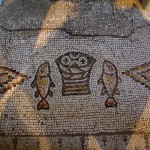 The first occurred in Tabgha, at the Church of the Heptapegon, (“The Church of Loaves and Fishes”), the ancient “remote place” that is traditionally believed to be where Jesus fed the multitudes. The beautiful mosaic you see is next to a large stone which protrudes through the floor, and is covered by the altar. The stone has traditionally believed to be where Jesus rested the foodstuff before offering his prayer and miraculously feeding thousands, in anticipation of the Eucharist he would later give to us.
The first occurred in Tabgha, at the Church of the Heptapegon, (“The Church of Loaves and Fishes”), the ancient “remote place” that is traditionally believed to be where Jesus fed the multitudes. The beautiful mosaic you see is next to a large stone which protrudes through the floor, and is covered by the altar. The stone has traditionally believed to be where Jesus rested the foodstuff before offering his prayer and miraculously feeding thousands, in anticipation of the Eucharist he would later give to us.
Even here, early in the trip, I knew I was feeling “off” and when I learned that the church was seen to by Benedictine Nuns, I made a special plea to Saint Benedict that in this place I might be strengthened to continue on. As I finished my prayer I saw a sister moving through the crowd toward the cloister and she and I seemed to catch each other’s eye; she moved directly toward me and I showed her my Jubilee medal and asked her, as a Benedictine, simply to remember my intentions in her prayers.
I expected nothing more than a nod from her, but this good young nun surprised me by taking my hand and leading me past the roped-off area, and to the altar. We stepped over the truly gorgeous mosaic floor and she placed me before the stone and prayed with me, there. After a few moments of silent prayer that brought tears, she led me back. As she re-attached the chain and cordoned off the area (and pilgrims began to flock around us for her attention) she hugged me and said confidently, “he will strengthen you to his own purposes. Be at peace.”
Pockets of oddly centered peace did manage to penetrate me, despite my fog and discomfort. In fact, a friend mentioned that this picture, taken as I stole into a bit of shade atop Masada, struck him as “remarkably serene.”
It was easy to be serene in the shade, where one could find it. But Masada was hot and just a few hours later, at the Dead Sea, I experienced a terrifying bout of breathlessness that convinced me something was really wrong, that it went beyond being-a-fatty-in-the-heat, and that whatever God’s purposes were for me, Jerusalem was no longer in the picture.
Before departing from the team of Catholic journalists with whom I was traveling (and the very kind hostess and guide from the Israel Ministry of Tourism which sponsored the trip) we were able to visit the beautiful Arab-Israeli town of Abu Ghosh, one of the earliest places of human habitation in Israel. There we celebrated Holy Mass together at the breathtaking and ancient Abbey of the Resurrection, where a double-community of nuns and monks reside, and the liturgy in this Crusader church, with its 13th Century frescoes, was simple and Benedictine and simply awe-inspiring.
The liturgy was full of Benedictine hospitality, too, with the postulant and novice religious leaving the choir to physically escort the faithful to Holy Communion. If that sounds strange, it was in fact a very warm experience. After mass, the sisters removed a cordon in order to allow visitors to reverence and photograph this Marian side altar. This statue reminds me very much of an ancient one to be found at St. John’s Abbey, in Minnesota.
As with the nun in Tabgha, I had yet another Benedictine encounter in prayer. Having shed his chasuble the abbot reappeared in the church and was suddenly standing before me, so I quietly explained that I was about to fly while feeling unwell, and asked for a blessing. He was lovely about it and placed his hands upon my head and made a profoundly moving prayer, in English, and although I don’t know how it could be, it seemed to me he spoke my name.
I hated leaving Israel without making it to Jerusalem, but the beauty of the Benedictine liturgy spoke deeply to my soul, and the generous blessing of the abbot set me truly at peace. Whether it was the blessing or the illness, that flight back to New York marked the first time I have ever slept on a plane, and the trip seemed to take but an instant, as though I had found Madeleine L’Engle’s wrinkle in time.
Four hours after landing, I was in the ER with the pneumonia that still has me brain-fogged and oxygen-deprived, and now using a nebulizer. I don’t know what God’s purpose was for me, in Israel; maybe it was solely that I could loan a useful scarf to a journalist with a bad sunburn. Maybe it was so this lone-Benedictine could finally have the experience of praying with members of her spiritual family; maybe it was simply so I could learn to be open to his purposes, whatever they may be, even if they involve a surrender I would rather not make, to an longish-illness that is perhaps meant to teach me a few things about acceptance, and rest, and the need, sometimes, to just breath and let everything else go.
I am whole-heartedly grateful for every bit of it, at this moment. And I love my Benedictine family and the Rule written for us by our Holy Father. Happy Feast Day!
All images are mine, taken while visiting Israel.
More on Abu Ghosh:
Monks in Zion
Monastery Information

